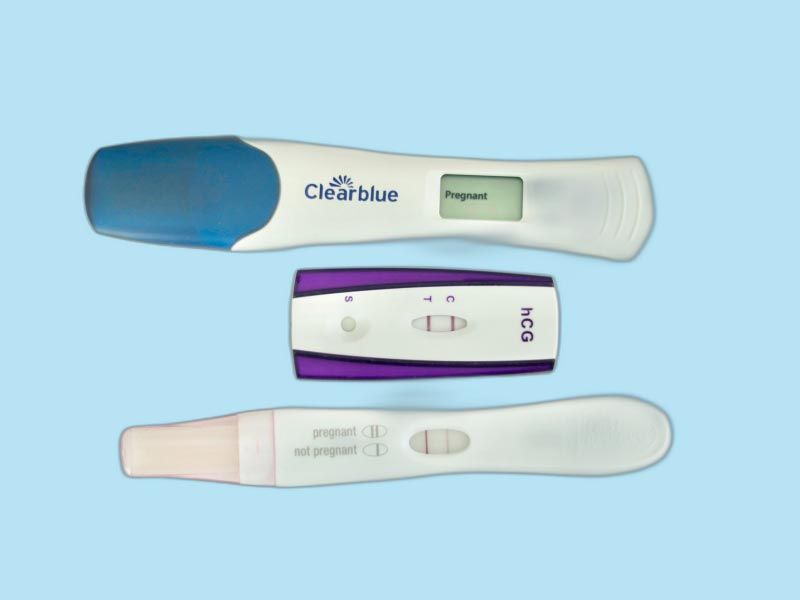
How to Test Fertility at Home
By Simona Byler
May 20, 2024
If you’re struggling with fertility concerns or searching for more information about fertility, know that you’re not alone! Comprehensive at-home fertility tests are a powerful addition to your reproductive healthcare toolbox. These tests can offer quick intel about ovulation, hormone balance, sperm count, and other factors that influence your ability to get pregnant.
And while they’re not a replacement for clinical tests and treatment, at-home fertility tests are an affordable and convenient way to learn more about your reproductive system and hormonal health. At Wisp, we love products that help you better understand your body and increase your medical autonomy. So, let’s take a look at the essential information about at-home fertility tests for men and women.
Can I test my fertility at home?
At-home fertility tests are all the rage, and for good reason! Getting pregnant is a tricky business, and while it happens quickly for some, an estimated 12 percent of adults in the U.S. face fertility challenges. (1) Plus, many folks are delaying pregnancy to further their careers, save money, and feel truly ready for parenthood. And while waiting to have a baby is perfectly responsible, it doesn’t make it easier to conceive.
Clinical fertility testing is more informative and accurate than at-home testing. But, visiting a doctor for fertility answers involves blood samples, pelvic exams, pap smears, and other un-fun procedures. Receiving results takes time and the process can be expensive, even with insurance. That’s why doctors recommend trying to conceive for one year before making an appointment if you’re under 35, or six months if you’re over 35. (2)
At-home fertility tests are an easier and more affordable alternative if you’re worried about infertility, or just curious about your results. There are plenty of at-home options, and testing for certain markers of fertility at home can be a quick and convenient first step in the baby-making process!
How do at-home fertility tests work?
There are a lot of elements influencing fertility for both men and women. Hormone levels, egg count, ovulation timing, and sperm count and shape all affect making an embryo happen. Because of the number of factors at play, different at-home fertility tests measure different biomarkers.
At-home fertility tests work by analyzing your saliva, urine, blood, or sperm and looking for specific indicators of fertility. Some tests analyze your results right away, and some have you send in your sample to a lab for analysis. The best at-home fertility tests are analyzed at an accredited lab to make sure the results are as reliable as possible. Let’s take a look at the specifics below!
At-home fertility test options for women
If you were assigned female at birth, your fertility is complex! Understanding even the basics can feel confusing and overwhelming. Luckily, at-home fertility tests for women can provide some insight into the different factors that affect fertility. Different tests measure different fertility biomarkers, but here are the most common ways fertility tests work for women.
Ovulation tests
Everyone’s menstrual cycle is different, but most people ovulate about 14 days after the start of their last period. 24-36 hours before ovulation, or when your ovary releases an egg into your fallopian tube, you get a surge of luteinizing hormone (LH).
Ovulation predictor kits (OKPs) measure your LH levels and help you figure out when you’re most fertile. Finding this “fertile window” tells you when you’re most likely to get pregnant—a.k.a. when you should have sex. Fun fact: sperm can survive in your system for up to five days! Having sperm ready and waiting in your fallopian tubes when you ovulate increases your chance of getting pregnant. (3)
While OKPs are usually accurate, they’re not reliable for people with irregular cycles or diagnoses such as polycystic ovary syndrome (PCOS). PCOS can cause increased LH levels all month long, so OKPs might give false positive results.
OKPs are affordable and easily available online or at a pharmacy. These at-home fertility tests work like a pregnancy test—you pee on a stick or dip a test strip in urine to measure your LH levels. Results are ready in a few minutes and don’t need to be analyzed at a lab. Tracking your cycle with OKPs and fertility-tracking apps can help you understand and stay on top of your fertility.
Hormone tests
We’ve already covered luteinizing hormone, but there are other hormones that women’s fertility tests measure. Having typical balances of these hormones can point to healthy fertility levels. But! They’re not a perfect measure of fertility or infertility, and you should always consult with a trusted medical professional if you’re concerned. Below are some of the hormones that at-home fertility tests measure.
Follicle-stimulating hormone (FSH): FSH is a hormone made by the pituitary gland that stimulates egg growth early in your cycle. If you have high FSH levels, it might mean you’re getting close to menopause, have PCOS, or aren’t releasing high-quality eggs during ovulation.
Testing your FSH levels gives you an idea of how many eggs you have, or your ovarian reserve. At-home fertility tests can measure your FSH levels with a blood or urine sample, usually taken on day three of your cycle. (4)
Estradiol: Estradiol is a type of estrogen that your body uses during ovulation. Your estradiol levels rise in the middle of your menstrual cycle and then drop off after ovulation. If estradiol rises too early in your cycle, it may mean your ovaries are working harder to recruit follicles to ovulate. At-home tests can measure your estradiol levels with a blood sample from a finger prick or a saliva sample.
Anti-mullerian hormone (AMH): Early stage ovarian follicles produce AMH, making it an indicator of the number of eggs you have left. Low AMH levels can mean you have a lower ovarian reserve—but it’s not a perfect predictor of fertility. At-home tests can measure your AMH levels with a blood sample from a finger prick or a saliva sample.
Thyroid function tests
Our bodies are wildly interconnected and complicated systems! That’s why some at-home fertility tests also look at thyroid function, as both underactive and overactive thyroids can cause infertility. (5) These tests measure thyroid stimulating hormone (TSH) and other thyroid hormones using a finger prick blood sample.
What are at-home fertility tests for men?
Though men’s reproduction might seem more straightforward, about one-third of all fertility challenges are related to male reproductive issues. (6) That means male fertility tests are just as important! Fertility tests for men usually involve a semen analysis, where a few different factors are measured.
The three main factors of semen analysis are:
- Sperm count: the number of sperm
- Motility: how well sperm move or swim
- Morphology: the size and shape of sperm
At-home tests can vary in what they measure. Some tests only detect if there’s sperm in the ejaculate, but don’t include an analysis of motility or morphology. The best at-home fertility tests for men will include a more thorough analysis–you can check out a vetted list of tests here!
These at-home male fertility tests are quick and easy to use, and more affordable than a doctor’s visit—not to mention less stressful. They can give you essential information about your fertility and whether your sperm is ready to fertilize an egg.
Where to get a fertility test
The best at-home fertility tests are readily available at a drugstore or online, making them an easy and convenient way to learn more about your reproductive system. There are plenty of options and choosing the right test depends on your unique fertility concerns. You know your body best! Looking for a comprehensive test with accredited lab results is a great starting point. And if you’re unsure, you can always reach out to your doctor for additional advice.
At Wisp, we know that fertility and pregnancy are deeply personal issues that can weigh on your mind. That’s why we’re glad that at-home fertility tests are becoming more available and accessible—so you can feel more informed and empowered in your fertility journey.
Explore Fertility Care

Hers & His Advanced Fertility Kit by Proov
$169.99
The only all-in-one fertility test kit for couples that covers both male and female testing

The PherDal® At Home Insemination Kit
$199
The only FDA-cleared and 100% sterile solution for at-home insemination.

Wisp Prenatal Vitamins
Starting at $14
Prepare for & support a healthy pregnancy with essential nutrients for you and baby.


